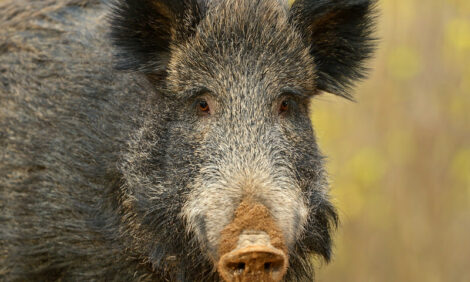



CME: H1N1 Outbreak in Indiana No Surprise
US - CME Lean Hogs futures prices were mixed in Tuesday’s open outcry trading session, the first since Monday afternoon’s announcement that novel H1N1 influenza had been found in a commercial hog herd in Indiana, write Steve Meyer and Len Steiner.Electronic quotes as of Wednesday morning are also mixed.
While only a few samples have, so far, tested positive for novel H1N1, the farm apparently houses 3000 animals — all of which have recovered from the influenza episode. The same is true of the animals’ caretakers who are the presumptive source of the pigs’ infection at this time. Reports indicate that shipments from this farm have resumed since the pigs have recovered. Neither the farm nor the producer was identified since influenza is not a reportable disease and poses no severe threat to either animal or human health. A quick perusal of internet news sites on Tuesday evening showed limited coverage of the issue. Most stories were on agriculture-related web sites.
This comes as no surprise to pork industry observers. The growing number of human cases of novel H1N1 influenza has steadily increased the probability of finding pigs infected with the virus. Samples from six pigs exhibited at the Minnesota State Fair in August tested positive and it was only a matter of time before the virus was found in a commercial herd. Experience in other countries as well as at USDA’s National Animal Disease Laboratory in Ames, Iowa had indicated that novel H1N1 was no more severe for pigs than the influenza strains seen in the past. Pigs’ symptoms are about the same as humans — fever, sneezing, coughing, off feed. If they could talk, the pigs would probably say “I ache all over and feel yucky,” the same as my (Steve Meyer writes today) daughter said last week when she had what we are pretty confident was novel H1N1 given that cases had been found in our schools the week before.
But remember some facts regarding influenza and pigs:
- Influenza is transmitted through pigs’ respiratory system. You cannot get novel H1N1 influenza from eating pork.
- Sick pigs are not allowed to be moved to slaughter.
- Influenza is a common disease for pigs. Pork producers vaccinate for common influenza strains each fall when the “flu season” for pigs begins. That season is the same as the flu season for people and corresponds to cooler weather when hog buildings are closed up tighter for the winter.
- It is not unusual for pigs to get influenza from the people who care for them. That is why veterinarians and pork producer organizations have for many years recommended that all workers in swine operations get vaccinated for influenza — to protect the pigs!
One of the roles of futures markets is to forecast prices for the commodity in question. Futures markets are great melting pots for information and knowledge where anyone who believes they have an advantage in either realm can vote on the price in the future with their votes numbered by the dollars they are willing to risk. The passage of time, of course, reveals more and more information about future price levels and that information theoretically leads to more and more accurate predictions was futures contracts reach expiration. Dr. John Lawrence and Undergraduate Research Assistant Clay Hoffman, both of Iowa State University’s Department of Economics, have recently published a series of papers that look at the time path of these predictions for CME Lean Hogs, Live Cattle and Feeder Cattle contracts. The papers can be found here. Look under the “Analysis” heading. You may have to scroll downward to find it.
They found that some contracts, such as December LH shown at right, follow a consistent pattern moving toward the price at expiration while others — even other months for a given species — follow a far more random pattern. In general, Lean Hogs contracts have the largest average errors over the contracts’ lives and the largest standard deviations of those errors. The three papers are quick, easy (ie. no math and no regressions!) reads that provide some interesting insights.








